Some of the most creative photographers are landscape photographers. Timing the moment just right to capture that one amazing photo in a natural environment is truly a skill that must be mastered before it can be fully appreciated. The physical agility of the photographer himself is amazing as he or she may need to crawl through tight spaces, climb unstable rocky hills, and engorge himself in extremely wet and muddy environments. The sacrifices they make to capture that perfect natural photo are remarkable. They risk dropping equipment, damaging a lens, and even physical injury. But it’s not just the physical strain that goes into capturing that perfect photo. The lens used to capture those images plays a significant part.
Nikon has some of the best lenses on the market for landscape photography. These lenses are not the newest on the market, but have been rated as some of the best for this type of photography. With that being said, here is a list of the seven best Nikon lenses for landscape photography.
The Nikon 14-24mm f/2.8G
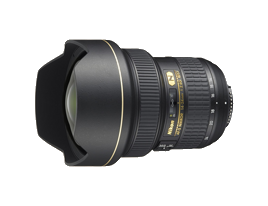 This lens is one of the sharpest lenses that Nikon has ever put on the market. The optics (aperture range, center to corner, and throughout the frame) on this lens is amazing! This lens also has an extremely fast autofocus, produces gorgeous colors, and has an amazing range for wide-angle photos. If you are a photographer that doesn’t rely on filters to create amazing landscape portraits, then this is the lens for you. It works great with the DX model body and the quality of images it produces is baffling.
This lens is one of the sharpest lenses that Nikon has ever put on the market. The optics (aperture range, center to corner, and throughout the frame) on this lens is amazing! This lens also has an extremely fast autofocus, produces gorgeous colors, and has an amazing range for wide-angle photos. If you are a photographer that doesn’t rely on filters to create amazing landscape portraits, then this is the lens for you. It works great with the DX model body and the quality of images it produces is baffling.
Some of the downfalls of this lens should not deter you from buying this lens and using it exclusively for your landscape photography projects. This lens is a heavy-weight lens and may be somewhat inconvenient depending on where your travel adventures take you. It is also expensive and bulky but, if you have the money to invest, this lens is perfect. The lens also cannot accommodate filters. You can purchase a filter holder system but it is also extremely expensive and may not be worth it if you don’t typically use filters on your lenses.
See complete specs and photos taken with this lens HERE
The Nikon 24-70mm f/2.8G
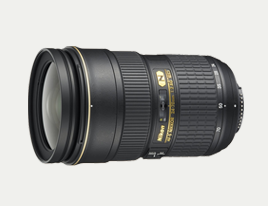 This Nikon lens is not as impressive as the 14-24mm f/2.8G although at lower f-stops from 5.6 and below, it performs amazingly well! The autofocus feature is lightening fast, renders amazingly gorgeous color, an extremely purposeful zoom range when used on full-frame cameras, and it has the capability to use filters. It has a constant aperture feature where the aperture does not change while zooming in or out. The sharpness of the photos as well as color and contrast is amazingly superb in all weather conditions and lighting conditions. The silent wave motor feature provides exceptionally quiet and fast auto focus and is equipped with nano crystal coating to reduce flare and ghosting. Another amazing feature about this lens which is very useful for landscape photographers is that it was designed to be completely protected from dust, extreme weather conditions, and moisture. This lens was specifically designed to be used with full-frame DSLR camera bodies. It is part of the Nikon “Trinity” series and will fit on most DX bodies although it may feel as if the lens is too long because of the 1.5x crop feature.
This Nikon lens is not as impressive as the 14-24mm f/2.8G although at lower f-stops from 5.6 and below, it performs amazingly well! The autofocus feature is lightening fast, renders amazingly gorgeous color, an extremely purposeful zoom range when used on full-frame cameras, and it has the capability to use filters. It has a constant aperture feature where the aperture does not change while zooming in or out. The sharpness of the photos as well as color and contrast is amazingly superb in all weather conditions and lighting conditions. The silent wave motor feature provides exceptionally quiet and fast auto focus and is equipped with nano crystal coating to reduce flare and ghosting. Another amazing feature about this lens which is very useful for landscape photographers is that it was designed to be completely protected from dust, extreme weather conditions, and moisture. This lens was specifically designed to be used with full-frame DSLR camera bodies. It is part of the Nikon “Trinity” series and will fit on most DX bodies although it may feel as if the lens is too long because of the 1.5x crop feature.
See complete specs and photos taken with this lens HERE
The Nikon 70-200mm f/2.8G VR II
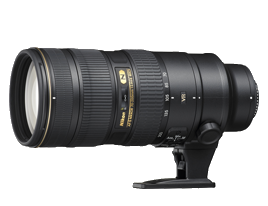 While this lens is bulky and quite heavy, it captures beautiful, sharp images. This lens isn’t typically used for landscape photography although it can be used when you want to capture a stunning image that is too far away for the 24-70mm lens. Landscape photography isn’t always about capturing long spanned panoramas or wide angles. Because of its incredible optical performance, this lens can be used for just about any type of photography although ideal for landscape photography.
While this lens is bulky and quite heavy, it captures beautiful, sharp images. This lens isn’t typically used for landscape photography although it can be used when you want to capture a stunning image that is too far away for the 24-70mm lens. Landscape photography isn’t always about capturing long spanned panoramas or wide angles. Because of its incredible optical performance, this lens can be used for just about any type of photography although ideal for landscape photography.
See complete specs and photos taken with this lens HERE
The Nikon 24mm f/3.5D PC-E
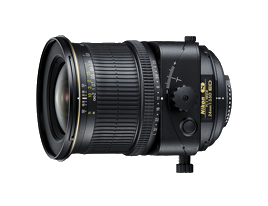 This lens is considered a “perspective control” lens as it has a wide angle tilt/shift feature on it making it extremely ideal for landscape photography. The biggest challenge a landscape photographer will face is bringing the furthest landscape object and the closest landscape object to a cohesive point which allows the photo to be in perfect focus. Even though putting the f-stop down will help in achieving this, often times you will find yourself in a situation where you must emphasize the foreground object by literally being on top of that object as lowering the f-stop will not provide enough depth. Putting the f-stop down to f/11 or lower on a full frame camera will reduce the quality of the image. To avoid having to do this, try using a focus stacking technique. This is where you take several images with their focus being on different points and then combine those images using post-production tools. This will only work well if the scenes in your images are very still and very clear. By using this tilt/shift lens, you can essentially bring your entire landscape plane together and in perfect focus with just one photo. It tilts right, left, up, and down so you have complete control over depth of field. Some of the key features of this lens that help you achieve this is that the lens is a manual focus lens, it is a fixed focal lens meaning you have to move around to get the shot you want, it fits only on pro-level DSLR’s and movement is limited on the smaller DSLR’s, and the lens itself is not easy to use and takes a lot of practice and reading of the manual to learn how to use its many features properly.
This lens is considered a “perspective control” lens as it has a wide angle tilt/shift feature on it making it extremely ideal for landscape photography. The biggest challenge a landscape photographer will face is bringing the furthest landscape object and the closest landscape object to a cohesive point which allows the photo to be in perfect focus. Even though putting the f-stop down will help in achieving this, often times you will find yourself in a situation where you must emphasize the foreground object by literally being on top of that object as lowering the f-stop will not provide enough depth. Putting the f-stop down to f/11 or lower on a full frame camera will reduce the quality of the image. To avoid having to do this, try using a focus stacking technique. This is where you take several images with their focus being on different points and then combine those images using post-production tools. This will only work well if the scenes in your images are very still and very clear. By using this tilt/shift lens, you can essentially bring your entire landscape plane together and in perfect focus with just one photo. It tilts right, left, up, and down so you have complete control over depth of field. Some of the key features of this lens that help you achieve this is that the lens is a manual focus lens, it is a fixed focal lens meaning you have to move around to get the shot you want, it fits only on pro-level DSLR’s and movement is limited on the smaller DSLR’s, and the lens itself is not easy to use and takes a lot of practice and reading of the manual to learn how to use its many features properly.
See complete specs and photos taken with this lens HERE
The Nikon 24mm f/1.4G
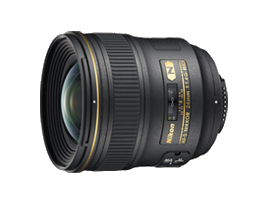 This lens is essentially flawless when it comes to the sharpness of the photographs you take as far as optical performance. This lens can be used on pretty much any camera body, even high resolution DSLR’s. This lens provides exceptional colors and contrast, astounding sharpness of photos, and a large aperture range of f/1.4 to f/1.6. This allows for higher levels of versatility so it can be used for pretty much any type of photography and works exceptionally well in low-light situations.
This lens is essentially flawless when it comes to the sharpness of the photographs you take as far as optical performance. This lens can be used on pretty much any camera body, even high resolution DSLR’s. This lens provides exceptional colors and contrast, astounding sharpness of photos, and a large aperture range of f/1.4 to f/1.6. This allows for higher levels of versatility so it can be used for pretty much any type of photography and works exceptionally well in low-light situations.
See complete specs and photos taken with this lens HERE
The Nikon 18-200mm f/3.5-5.6 G ED-IF AR-S VR DX
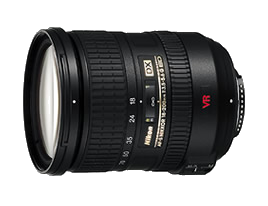 This wide angle lens creates an amazing 3D effect, The VR II vibration reduction feature provides faster shutter speed by 4x’s a traditional lens. It has two ED glass and 3 aspheric lenses built into the full lens. The resolution and quality of photos is outstanding as this lens produces high resolution images at the best contrast quality and is extremely versatile. It also has an 11x zoom lens and a focal range of 18-200mm. The silent wave motor allows for extremely quiet and fast auto-focusing and it is extremely easy to switch from auto to manual focus with this lens.
This wide angle lens creates an amazing 3D effect, The VR II vibration reduction feature provides faster shutter speed by 4x’s a traditional lens. It has two ED glass and 3 aspheric lenses built into the full lens. The resolution and quality of photos is outstanding as this lens produces high resolution images at the best contrast quality and is extremely versatile. It also has an 11x zoom lens and a focal range of 18-200mm. The silent wave motor allows for extremely quiet and fast auto-focusing and it is extremely easy to switch from auto to manual focus with this lens.
See complete specs and photos taken with this lens HERE
The Nikkor AF-S 16-35mm f/4G ED VR
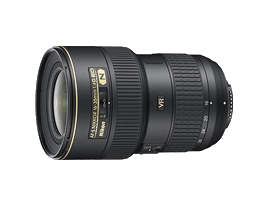 This lens is an ultra-wide high quality lens with amazing zoom capacity. It costs about half the price of the 14-24mm lens and its zoom capacity is just as amazing. It’s also extremely versatile and can be used as a general use lens as well. It gives up to four stops compensation for its one-stop aperture. That along with the vibration reduction feature makes it possible to hand hold three f-stops slower when used at maximum aperture. The most amazing feature about this lens is it is the only lens from Nikon/Nikkor that includes optical stabilization.
This lens is an ultra-wide high quality lens with amazing zoom capacity. It costs about half the price of the 14-24mm lens and its zoom capacity is just as amazing. It’s also extremely versatile and can be used as a general use lens as well. It gives up to four stops compensation for its one-stop aperture. That along with the vibration reduction feature makes it possible to hand hold three f-stops slower when used at maximum aperture. The most amazing feature about this lens is it is the only lens from Nikon/Nikkor that includes optical stabilization.
See complete specs and photos taken with this lens HERE
Recommended Reading:
- 2013 Photographer's Market: The Most Trusted Guide to Selling Your Photography
- How to Create Stunning Digital Photography
- Best Business Practices for Photographers
- The Fast Track Photographer Business Plan: Build a Successful Photography Venture from the Ground Up
- Group Portrait Photography Handbook
- 500 Poses for Photographing Women
- The Best of Family Portrait Photography: Professional Techniques and Images
- 500 Poses for Photographing Group Portraits
- Selling Your Photography: How to Make Money in New and Traditional Markets
- Starting Your Career as a Freelance Photographer
- Photographer's Survival Manual: A Legal Guide for Artists in the Digital Age
- Legal Handbook for Photographers: The Rights and Liabilities of Making Images
- Taking Stock: Make money in microstock creating photos that sell
- Going Pro: How to Make the Leap from Aspiring to Professional Photographer
Photos copyright © 2013 Nikon Corporation
